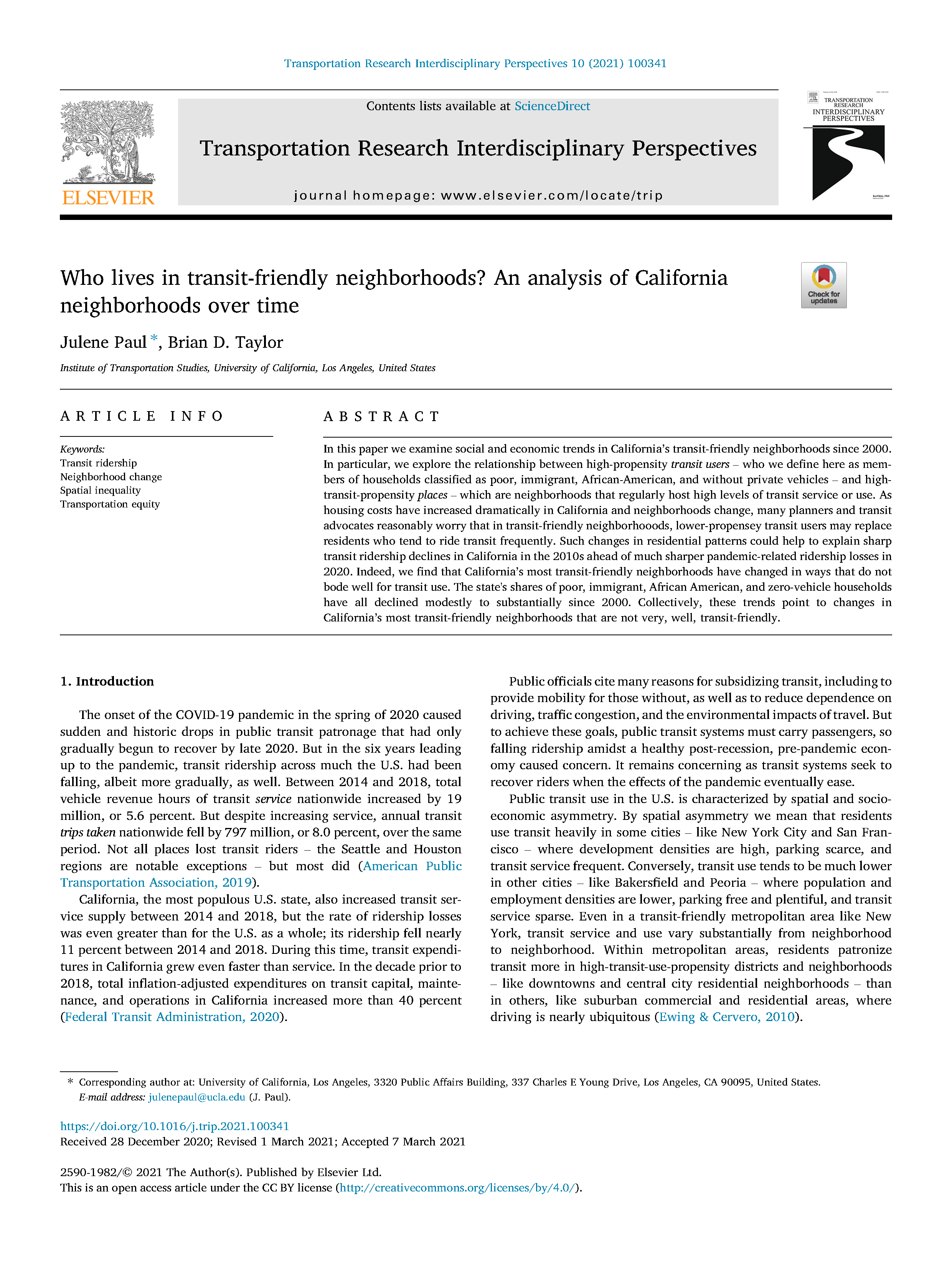Date: June 1, 2021
Author(s): Julene Paul, Brian D. Taylor
Abstract
In this paper we examine social and economic trends in California’s transit-friendly neighborhoods since 2000. In particular, we explore the relationship between high-propensity transit users – who we define here as members of households classified as poor, immigrant, African-American, and without private vehicles – and high-transit-propensity places – which are neighborhoods that regularly host high levels of transit service or use. As housing costs have increased dramatically in California and neighborhoods change, many planners and transit advocates reasonably worry that in transit-friendly neighborhooods, lower-propensey transit users may replace residents who tend to ride transit frequently. Such changes in residential patterns could help to explain sharp transit ridership declines in California in the 2010s ahead of much sharper pandemic-related ridership losses in 2020. Indeed, we find that California’s most transit-friendly neighborhoods have changedin ways that do not bode well for transit use. The state’s shares of poor, immigrant, African American, and zero-vehicle households have all declined modestly to substantially since 2000. Collectively, these trends point to changes in California’s most transit-friendly neighborhoods that are not very, well, transit-friendly.
About the Project
From 2014 to 2018, California lost more than 165 million annual boardings, a drop of over 11%. This project examines public transit in California in the 2010s and the factors behind its falling ridership. Transit ridership has been on a longer-term decline in regions like Greater Los Angeles and on buses, while ridership losses in the Bay Area are more recent. While overall transit boardings across the state are down since 2014, worrisome underlying trends date back earlier as patronage failed to keep up with population growth. But reduced transit service is not responsible for ridership losses, as falling transit ridership occurred at the same time as operators instead increased their levels of transit service. What factors help to explain losses in transit ridership? Increased access to automobiles explains much, if not most, of declining transit use. Private vehicle access has increased significantly in California and, outside of the Bay Area, is likely the biggest single cause of falling transit ridership. Additionally, new ride-hail services such as Lyft and Uber allow travelers to purchase automobility one trip at a time and likely serve as a substitute for at least some transit trips. Finally, neighborhoods are changing in ways that do not bode well for public transit. Households are increasingly locating in outlying areas where they experience longer commutes and less transit access to employment. At the same time, a smaller share of high-propensity transit users now live in the state’s most transit-friendly neighborhoods.


